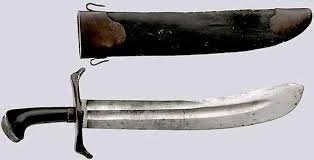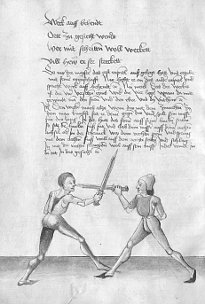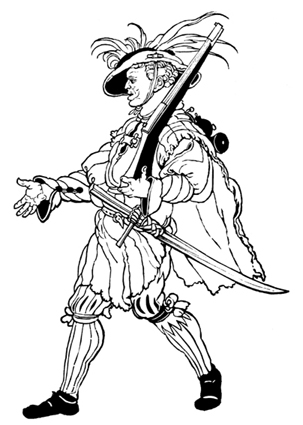A mess of messers
I posted this to Myarmoury, I thought some people here might be interested as well
So I think there was an interesting technical / historical discussion emerging about Messers in the Makers and Manufactuters forum, maybe we can continue that here.
I have been interested in attempting to classify these weapons myself and try to determine their role in society and warfare but have found it challenging.
One point of confusion I ran into is that there is a whole family of messer-like weapons which seem to be related, in that they share the following features:
A long single-edged cutting blade
A long handle like a knife handle
A nagel
So I've noticed there seem to be what look like at least 6 or 7 distinct types of the 'messer'' family that I've tentatively identified. This mostly applies to the 15th Century when the earliest currently known messer fencing manuals appeared. These namess come from German terms I've seen in historical documents as well as on modern German language auction sites, and these various types all overlap somewhat, which I think has caused some of the confusion around this class of weapons.
The
Hauswehr is a long, broad knife with a nagel which was used as the primary home-defense for a farmer or in some cases, a prestige weapon owned by a burgher in Renaisance HRE or Poland. This weapon is shaped like a grossmesser only smaller, with a 12"-16" blade length. I think some of these were made fancy like these from Tods Stuff...
or more simply like this antique
But in both cases had some utility as a tool while being primarily intended as a weapon. Like a bayonett for a 20th Century soldier.
The
Baurenwehr is a similar long, broad knife with a nagel which was used as a work-knife by farmers and rural laborers of some distinction or social standing. I think this played a role similar in many respects to what a machete does in Central America today, both as a tool and as a prestige weapon for a certain social class (poor people of some means, essentially). This weapon is shaped like a grossmesser or sometimes is more pointed a lot like an Afghan "khyber knife", except with a nagel. Same size as a Hauswehr.
The
Rugger was a hunting knife similar to a Baurenwehr, but specifcially designed for killing and / or skinning animals. These could be larger, average maybe a bit bigger or broader in the blade..
The
Coltel (I think related to the Italian term Colatessa and later, possibly to the Cutlass) was also a hunting knife but with a very broad blade, which often did not come to a point, maybe rounded off or squared off. It has a nagel. I think this one is specifically for skinning and butchering animals rather than for killing. Theere are also some of these which look a lot like a bowie knife. Very similar weapons were also used in Burgundy and Northern Spain.
German auction sites refer to these types as ruggers or hauswehrs but I have come to think of them as a distinct subtype
The
Grossmesser is the term I specifically apply to the shorter fighting messers, 16-28" long, sometimes with broad blades, such as you see in Durer, sometimes with narrower blades like in Lechkukner . These usually seem to be single-edged with no false-edge.
The
Langenmesser is for a longer fighting messer, 28"-36" long, some of these are very long. They usually have a large nagel sometimes a clamshell type, often without quillions but sometimes big quillions like in Talhoffer. They also seem to have some with broad blades (in artwork) and some with quite narrrow blades (antiques at auction sites)
The
Kriegsmesser is of course the infamous very large two-handed big war-messer, with a partial false edge and up to 48" long, though most seem to be a bit shorter around 42"-44" or so.
The Kriegsmesser also overlaps with the large
Hungarian Infantry Saber (don't know of any period name for this weapon), which is very similar two handed weapon but more curved and with no partial false edge, and with the
Schwiesersabel, which is a slender Swiss messer with a complex hilt.
And then you have the Falchion which is a completely different animal I think, and also has many distinct subtypes.
G















